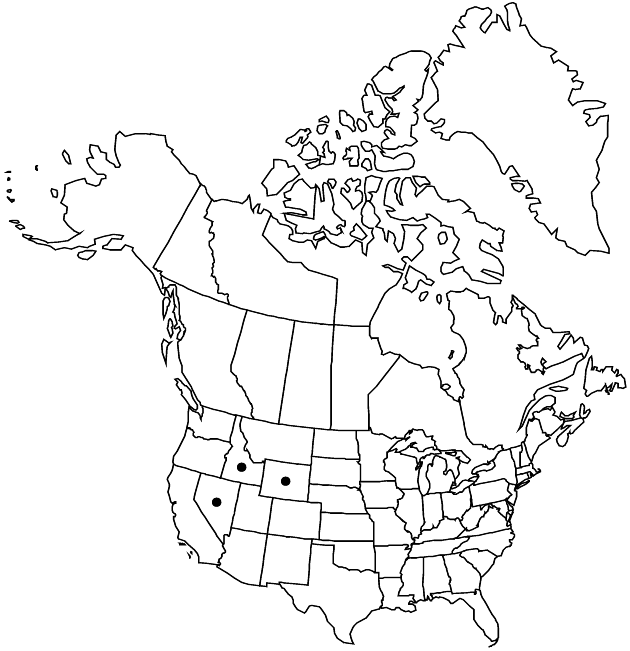Difference between revisions of "Antennaria arcuata"
Leafl. W. Bot. 6: 41. 1950.
FNA>Volume Importer |
imported>Volume Importer |
||
| Line 8: | Line 8: | ||
}} | }} | ||
|common_names=Box or meadow pussytoes | |common_names=Box or meadow pussytoes | ||
| + | |special_status={{Treatment/ID/Special_status | ||
| + | |code=E | ||
| + | |label=Endemic | ||
| + | }}{{Treatment/ID/Special_status | ||
| + | |code=C | ||
| + | |label=Conservation concern | ||
| + | }} | ||
|basionyms= | |basionyms= | ||
|synonyms= | |synonyms= | ||
| Line 46: | Line 53: | ||
|publication title=Leafl. W. Bot. | |publication title=Leafl. W. Bot. | ||
|publication year=1950 | |publication year=1950 | ||
| − | |special status= | + | |special status=Endemic;Conservation concern |
| − | |source xml=https:// | + | |source xml=https://bibilujan@bitbucket.org/aafc-mbb/fna-data-curation.git/src/bb6b7e3a7de7d3b7888a1ad48c7fd8f5c722d8d6/coarse_grained_fna_xml/V19-20-21/V19_627.xml |
|tribe=Asteraceae tribe Gnaphalieae | |tribe=Asteraceae tribe Gnaphalieae | ||
|genus=Antennaria | |genus=Antennaria | ||
Revision as of 21:39, 27 May 2020
Dioecious. Plants 5–15(–20) cm (stems woolly). Stolons 4–10 cm (arched). Basal leaves 1–3-nerved, narrowly to broadly spatulate, or narrowly rhombic-obovate, 20–45 × 3–15 mm, tips mucronate, faces densely white-woolly. Cauline leaves linear, (2–)5–40 mm, not flagged. Heads (4–)7–25, in racemiform to paniculiform or corymbiform arrays. Involucres: staminate 3–5 mm; pistillate 4.5–6(–7) mm. Phyllaries distally whitish (mostly staminate) or grayish stramineous to light brown. Corollas: staminate 2.5–4 mm; pistillate 3.5–5 mm. Cypselae 1–1.8 mm, glabrous; pappi: staminate 3–4.5 mm; pistillate 4–6 mm. 2n = 28.
Phenology: Flowering summer.
Habitat: Moist alkaline basins in sagebrush steppe
Elevation: 1500–2300 m
Distribution

Idaho, Nev., Wyo.
Discussion
Antennaria arcuata is known from three widely disjunct areas in Blaine County, Idaho; Elko County, Nevada; and Fremont County, Wyoming (R. J. Bayer 1992). It is characterized by arching stolons and white-woolly indument (Bayer) and is not easily confused with other species of Antennaria.
Selected References
None.